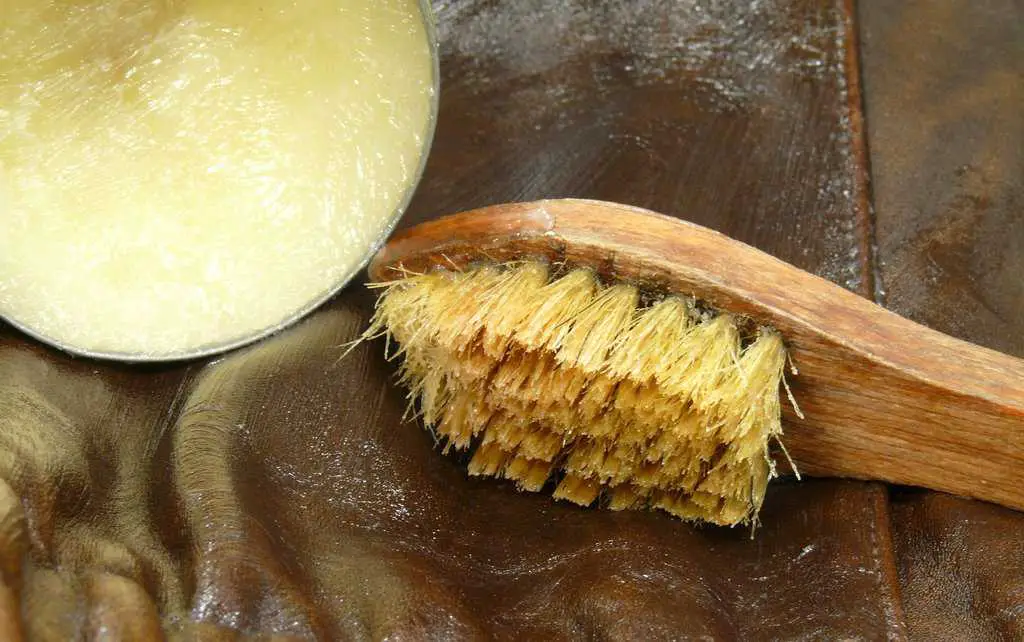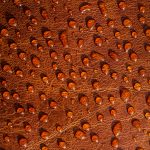You might have hoped for a leather patina to show but instead, the surface of your precious leather items has become tacky and sticky. The most important thing you should know is what makes them sticky in the first place and how you can fix this, which is exactly what we’ll be talking about in this article.
What makes leather sticky?
There are many reasons why your leather jacket or your leather sofa might be feeling sticky and tacky. Just like all your other garments and furniture, leather will eventually show signs of aging the more you use them. If leather is exposed to extreme conditions that are not ideal.
UV-damage
UV damage is not caused by leather items simply seeing the sun for a short while. UV damage is actually caused by too much heat or direct heat for a long time. Even if your leather couch is away from direct sunlight, as long as it’s close to a direct heat source it will still become sticky because of the humidity.

This is caused by the natural oils that form a sticky residue on the surface. The more you expose leather materials to heat and sunlight, the more clammy they will feel.
Over-conditioning
Conditioning your precious leather items is necessary and a must in order for them to maintain their texture and appearance. However, there is such a thing as over-conditioning and it’s the most common reason why leather becomes tacky. If your leather items are over-saturated with conditioner and oils, the pores become clogged.
Once the leather pores start clogging up, the excess conditioner is no longer being absorbed by the leather fibers. Instead, the conditioner just pools on the surface leaving a very sticky and unpleasant feel.
Spills and stains
Another common and obvious reason why leather gets sticky is because of spills that eventually cause stains when left untreated. It’s always recommended to wipe the surface of the leather with a paper towel as soon as a spill gets into contact with it to avoid the liquid from penetrating deep into the fibers.
Some spills such as water or alcohol can evaporate quickly, while others such as soda or syrups can be difficult to wipe off and will definitely leave a sticky feel on your leather furniture. Even the excess moisture from small water spills can still make the surface feel sticky if not cleaned immediately.
Sweat and body oil
If you’re planning to wear your leather jacket during the summer, be ready to deal with wiping off your sweat and body oils from your leather clothes. When you sweat a lot, most of your body sebum will come into contact with the leather material, and this is what causes sticky leather in the summer.
How do you fix leather that is sticky?
No one likes wearing or sitting down on sticky leather surfaces. Not only are they extremely uncomfortable, but they’re also not pleasing to look at. Now that you know the causes of sticky and tacky leather, it’s time to learn how you can fix it. Here are some quick fixes for sticky leather:
For over-conditioning
If you happened to over-saturate your leather goods with conditioner and they’ve become too annoying to deal with, here’s what you can do:
- Your goal is to get it as dry as possible because you want to start over again and unclog the leather pores.
- Wipe off as much conditioner as you can using a soft, clean cloth or paper towel.
- If the excess conditioner is not coming off as effectively as you want, you can use a mild leather cleaner for a fresh canvas.
- If you don’t have a leather cleaner, you may use an alcohol solution to strip off the conditioner from the surface.
- To do this, mix 1 part of warm water with 1 part rubbing alcohol and apply using a spray bottle and a microfiber cloth.
- Let the item dry naturally before proceeding to condition them again. This time, stick to the conditioning regimen and only do it once every 6 months.
For UV damage
UV damage on leather can easily be remedied as long as you work on it as soon as you can. The main thing you should remember for this type of damage is that you need to bring back the lost moisture of the material to prevent cracking and peeling in the future. Here are some steps you can do to fix UV damage on leather”
- Apply leather conditioner to the surface to restore its moisture. This will also soften the material to prevent the fibers from going brittle.
- Apply a leather protector that has leather UV protection to prevent further damage.
- Choose a better storage place for your leather goods. Keep them away from direct sunlight or any direct heat source such as hairdryers or the fireplace.
For liquid spills
Liquid spills can come in the form of juice, soda, water, or anything that can penetrate the fibers of the leather. This also includes water damage caused by rain exposure or excess moisture due to bad storage conditions. Not only will these cause liquid stains, but they also put the material at risk for mold growth and mildew.
To remedy liquid spills on leather, here are things you need to keep in mind:
- Wipe off the liquid as quickly as you can. Find any dry cloth or paper towel near you and absorb as much liquid as you can to prevent it from going deeper.
- If you’re dealing with a sticky buildup from liquids such as juice, soda, or syrup, you should dampen the soft cloth first with water before wiping the surface.
- For spills that have been absorbed into the pores and the fibers, use a leather cleaner that can penetrate the leather pores. You can check out our review about the best leather cleaners or the best leather wipes for your leather goods.
- Apply a waterproofing spray to your leather goods to prevent any liquid-related problems in the future.
For sweat and body oils
Compared to liquid spills, dealing with body oils and sweat can be a bit trickier. You might not be able to wipe off your body sebum as soon as you can and not only can this cause leather stickiness, but it can also cause salt stains eventually. To remedy this problem, here’s what you’re going to do:
- Clean your leather jacket or any leather garment that you got your sweat on. This is especially necessary during summer when it’s hot and humid outside.
- You can use a leather cleaner like leather saddle soap or gentle wipes to clean the surface.
- If the stickiness persists, try other cleaning solutions that are oil-based to remove the body oils stuck on the surface. You can also use a mild soap or mild dish soap solution since it’s also great for removing oil stains.
- Let your leather item dry naturally away from direct heat and apply some leather conditioner to restore the lost moisture.
Conclusion
If you haven’t spilled anything on your leather item but it suddenly gets sticky and you have no clue why we hope this guide has helped you answer your questions and figured out how to fix them as well.
Sticky leather isn’t comfortable and your leather item is probably something that you look forward to wearing, so it’s best to enjoy that experience instead of feeling uncomfortable in it.
FAQ
Why does patent leather become sticky?
The most common reason why your patent leather is becoming sticky is due to decay. That high gloss finish you can see on patent leather is plastic and will eventually start breaking down over time, causing it to become sticky. Unfortunately, there is nothing you can do to stop the decay, you can only lessen the stickiness on the surface temporarily.
Does vaseline soften leather?
Vaseline is made from petroleum jelly so technically, it can bring back the softness of leather materials such as leather shoes, bags, jackets, and others. However, we recommend using pure petroleum jelly instead of brands like Vaseline because the latter might contain other chemicals that might have adverse effects on leather.
Why is my painted leather sticky?
If you find that your painted leather shoes or furniture are sticky, it might be because you’ve put too many coats of paint. You want it to be just enough to cover the surface thoroughly, but not thick that it becomes sticky too quickly. You can remedy the stickiness by using a leather cleaner or white vinegar cleaning solution.
Is patent leather real or fake?
Traditionally, patent leather is made from fine-grain leather and is only treated with a natural and oil-based coating to give off that glossy appearance. Nowadays, it’s more common to see modern patent leather that is made from faux leather with a synthetic coating since it’s easier and cheaper to produce.
Does vinegar remove sticky residue on leather?
Yes, a white vinegar and water cleaning solution can remove the sticky residue you feel on the leather surface. However, this is only a temporary fix and works well only if the stickiness is not that bad. You also need to test this cleaning solution on a hidden spot of your leather item to see if it causes discoloration.
Is vaseline good for faux leather?
Yes, vaseline is a good conditioning treatment for faux leather because it provides a thin layer of protection on the surface. This means it can preserve the longevity of the synthetic coating used and it will make it look shiny and new. Just be sure to use the unscented ones and apply them with a soft cloth for an even coat.






